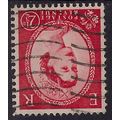Romney Marsh, Kent - multiview incl Dungeness - postcard Salmon
- Condition : Used
- Dispatch : 2 Days
- Brand : None
- ID# : 106620808
- Quantity : 1 item
- Views : 217
- Location : United Kingdom

- Seller : justthebook (+1703)
- Barcode : None
- Start : Wed 22 May 2013 23:13:34 (BST)
- Close : Run Until Sold
- Remain : Run Until Sold
More Listings from This Seller view all
Seller's Description
- Postcard
- Picture / Image: Greetings from Romney Marsh - multiview postcard - Brookland / Dungeness / Romney Marsh / Littlestone / Dymchurch / New Romney / Greatstone
- Publisher: J Salmon (2-64-17-08)
- Postally used: no
- Stamp: n/a
- Postmark(s): n/a
- Sent to: n/a
- Notes / condition:
Please ask if you need any other information and I will do the best I can to answer.
------------------------------------------------
Postage & Packing:
UK (incl. IOM, CI & BFPO): 99p
Europe: £1.60
Rest of world (inc. USA etc): £2.75
No additional charges for more than one postcard. You can buy as many postcards from me as you like and you will just pay the fee above once. (If buying postcards with other things such as books, please contact or wait for invoice before paying).
Payment Methods:
UK - PayPal, Cheque (from UK bank) or postal order
Outside UK: PayPal ONLY (unless otherwise stated) please. NO non-UK currency checks or money orders (sorry).
NOTE: All postcards are sent in brand new stiffened envelopes which I have bought for the task. These are specially made to protect postcards and you may be able to re-use them. In addition there are other costs to sending so the above charge is not just for the stamp!
I will give a full refund if you are not fully satisfied with the postcard.
----------------------------------------------
Text from the free encyclopedia WIKIPEDIA may appear below to give a little background information (internal links may not work) :
*************
Marsh is a sparsely populated wetland area in the counties of Kent and East Sussex in the south-east of England. It covers about 100 square miles (260 km²).
As Egypt was the gift of the Nile, this level tract ... has by the bounty of the sea been by degrees added to the land, so that I may not without reason call it the Gift of the Sea."" (from Britannia by William Camden 1551–1623)
- ""The world according to the best geographers is divided into Europe, Asia, Africa, America, and Romney Marsh"" from Ingoldsby Legends, Reverend Richard Harris Barham (Rector of Snargate)
Romney Marsh is flat and low-lying, with parts below sea-level. It consists of several areas:
- the Romney Marsh proper, lying north of a line between New Romney and Appledore;
- the Walland Marsh, south of that line to approximately the Kent/East Sussex border;
- the East Guldeford Level, south again to Rye;
- the Denge Marsh, south-east of Lydd, which now includes Denge Beach and Dungeness;
- the Rother Levels, which, with various ditches, lie around the Isle of Oxney; and
- the Rye, Winchelsea and Pett Levels.
The River Rother today flows into the sea below Rye; but until 1287 its mouth lay between Romney and Lydd. It was tidal far upstream, almost to Bodiam. The river mouth was wide with a huge lagoon, making Rye a port at its western end. That lagoon lay behind a large island, which now makes up a large part of the Denge Marsh, on which stood the ports of Lydd and the old Winchelsea. All these ports were affiliated to (as ""limbs"" of) the Cinque Ports.
The Romney Marsh has been gradually built up over the centuries.
The most significant feature of the Marsh is the Rhee wall (Rhee is a word for river), forming a prominent ridge. This feature was extended as a waterway in three stages from Appledore to New Romney in the 13th century. Sluices controlled the flow of water, which was then released to flush silt from the harbour at New Romney. Ultimately, the battle was lost; the harbour silted up and New Romney declined in importance. The Rhee kept part of the old port open until the 15th century.
The wall at Dymchurch was built around the same time; storms had breached the shingle barrier, which had protected it until that time. It is a common misconception that both these structures were built by the Romans.
- In 1250 and in the following years, a series of violent storms broke through the coastal shingle banks, flooding significant areas and returning it to marsh, and destroying the harbour at New Romney. In 1287 water destroyed the port town of Old Winchelsea (now located some 2 mi (3 km) out in Rye bay), which had been under threat from the sea since at least 1236. Winchelsea, the third largest port in England and a major importer of wine, was relocated on higher land, with a harbour consisting of 82 wharfs.
Those same storms, however, helped to build up more shingle: such beaches now ran along practically the whole seaward side of the marshland.
- By the 14th century, much of the Walland and Denge Marshes had been reclaimed by ""innings"", the process of throwing up an embankment around the sea-marsh and using the low-tide to let it run dry by means of one-way drains set into the new seawall, running off into a network of dykes called locally ""sewers""
- In 1462, the Romney Marsh Corporation was established to install drainage and sea defences for the marsh, which it continued to build into the 16th century.
- By the 16th century, the course of the Rother had been changed to its channel today; most of the remainder of the area had now been reclaimed from the sea.
- The shingle continues to be deposited. As a result, all the original Cinque Ports of the Marsh are now far from the sea. Dungeness Point is still being added to: although (especially near Dungeness and Hythe) a daily operation is in place to counter the reshaping of the shingle banks, using boats to dredge and move the drifting shingle.
- NB a map in the *Romney Marsh Gazetteer shows the stages clearly.
The Marsh became the property of the Priory of Canterbury in the 9th century, who granted the first tenancy on the land to a man called Baldwin, sometime between 1152 and 1167, for ""as much land as Baldwin himself can enclose and drain against the sea""; Baldwin's Sewer (drainage ditch) remains in use. The marsh has since become covered by a dense network of drainage ditches and once supported large farming communities. These watercourses are maintained and managed for sustainable water levels by the Romney Marsh Area Internal Drainage Board[1]
Romney Marsh is adjacent to the High Weald Area of Outstanding Natural Beauty (AONB), which is less developed than many other areas in Kent and Sussex. The decline in sheep prices meant that even the local stock (sold around the world for breeding for over two centuries) became unsustainable. Turfing had always been a lesser practice due to the grassland kept short by the sheep reared upon it, but farms are increasing in size to compensate for the decline in sustainable livestock farming. Some view this as unsustainable due to the damage to soil ecology of the Marsh. The only other alternative, since 1946, has been for farmers to turn to arable farming, changing the landscape from a patchwork of small family farms to a few extensive arable production units.
type=printed postcards
theme=topographical: british
sub-theme=england
county/ country=kent
number of items=single
period=1945 - present
postage condition=unposted
Listing Information
| Listing Type | Gallery Listing |
| Listing ID# | 106620808 |
| Start Time | Wed 22 May 2013 23:13:34 (BST) |
| Close Time | Run Until Sold |
| Starting Bid | Fixed Price (no bidding) |
| Item Condition | Used |
| Bids | 0 |
| Views | 217 |
| Dispatch Time | 2 Days |
| Quantity | 1 |
| Location | United Kingdom |
| Auto Extend | No |




 for 1 item(s)
for 1 item(s)

















